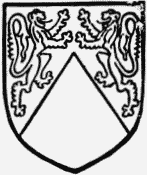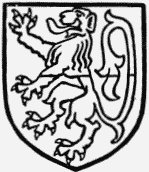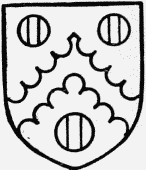A History of the County of Hertford: Volume 2. Originally published by Victoria County History, London, 1908.
This free content was digitised by double rekeying. All rights reserved.
'Parishes: Hexton', in A History of the County of Hertford: Volume 2, ed. William Page (London, 1908), British History Online https://www.british-history.ac.uk/vch/herts/vol2/pp352-354 [accessed 30 April 2025].
'Parishes: Hexton', in A History of the County of Hertford: Volume 2. Edited by William Page (London, 1908), British History Online, accessed April 30, 2025, https://www.british-history.ac.uk/vch/herts/vol2/pp352-354.
"Parishes: Hexton". A History of the County of Hertford: Volume 2. Ed. William Page (London, 1908), British History Online. Web. 30 April 2025. https://www.british-history.ac.uk/vch/herts/vol2/pp352-354.
In this section
HEXTON
Hehstanstuna, Hegestanestone (xi cent.); Hextenestona (xiv cent.); Hextone (xv cent.).
Hexton formerly belonged to the half-hundred of Hitchin, but when it came into the possession of the abbots of St. Albans it was probably added by them to their hundred of Cashio. (fn. 1)
This parish is a peninsula of Hertfordshire jutting northwards into the county of Bedford. The southern half of the parish is part of the chalky downs of the Chiltern Hills, which are covered with short turf and plantations of fir trees. The hills end abruptly and close to their foot lies the village of Hexton. It stands among grass fields and orchards at the beginning of a low plain, which, sloping gradually to the north, becomes merged in the large plain of southern Bedfordshire. The southern boundary of the parish is the grassy Icknield Way.
The parish was inclosed by an Act of 1766. (fn. 2)
The whole parish, with the exception of one small piece of ground belonging to a St. Albans charity, is owned by Mr. George Herbert Hodgson, who lives in Hexton Hall, a large modernized house standing in an extensive park. There is no regular village street, but most of the houses are near cross roads, which lead north, south, east and west and connect Hexton with the neighbouring small villages. Hitchin, which is the nearest town, lies about 6 miles due east.
The old ill-built cottages are being rapidly replaced by new substantial ones. There is a small hamlet called Mortgrove on the hills in the south, consisting of a farm and several cottages. The population had been steadily diminishing for some years, but lately the decrease has been arrested.
A number of ancient coins have been found in the neighbourhood, (fn. 3) and there is a strongly entrenched earthwork in the parish, known as Ravensburgh Castle. (fn. 4)
A little stream taking its rise near Ravensburgh Castle used to flow open along the village road. It is now inclosed in and utilized for the water supply of the cottages.
The account given by Francis Taverner (fn. 5) of the Hocktide revels celebrated yearly in the village, 'in the memorie of some yet lyving,' is most interesting. Hocktide, he says, 'signifies a tyme of skorne and contempt which fell upon the Danes by the death of Hardicanute their king' and was 'solemnized by the best inhabitants, both men and women in Hexton, in the fields and streetes with strange kind of pastyme and jollities.' He then proceeds to give a detailed account of the game of Pulling at the Pole, which was played by the men and women of the place on the slope of Waytyng Hill, the women attempting to pull the pole down the hill in defiance of the men. The game would last some two or three hours, but in the end the women always succeeded in bringing the pole to the cross by the town-house door, after which a feast was held in the town house, and a collection made, the proceeds of which were given in part to the poor, and part to the church-wardens for the repair of the church—the latter share amounting on an average to some 20s. The feast was followed by further sports, the women once more against the men at Base and other games. The roughness of the play would seem open to obvious objections, but Taverner concludes his account with the criticism that 'these nice tymes of ours would not only despise these sports, but also account them ymmodest if not prophane, but those playne and well-meaning people did solace themselves in this manner, and that without offence or scandall.'
Saint Faith's Well, whose site was a little to the south of the church, was filled up, probably at the Reformation, and the waste ground around it was drained and levelled by Francis Taverner in 1624; he includes in his account of the parish a description of the well and of the shrine and image of Saint Faith placed over it. So rich were the offerings made by the people who came from far and near, that 'the vicaredge in those days of Hexton was of a better yearly reveneu than the parsonage. I coulde wish,' adds Taverner, 'some good ladye would putt to her helping hand now, for our vicaredge hath extreme neede thereof.'
The subsoil and surface soil are chalk. The chief crops are corn and turnips. In 1905 there were 903½ acres of arable land, 301½ permanent grass, and 108½ woodland. (fn. 6)
The following are some place-names extant in this village: Fanny's Spinney, Mortgrove, Furger's Wood, and Cank Hole.
MANORS
HEXTON seems to have been granted to the monastery of Saint Albans at two different dates, by Sexi a noble Dane, (fn. 7) and by Ailward and Leofwyn, whose gift amounted to four hides of land. (fn. 8) At the time of the Domesday Survey the abbot's holding was assessed at 8 hides and 3 virgates, of which 4 hides were in demesne, half a hide was held by Geoffrey de Bech under the abbot, and 3 hides were similarly held by an Englishman. (fn. 9) It is also recorded that Earl Harold had attached 1 virgate in Hexton to Hitchin by force and by fraud, (fn. 10) and, among the lands of Geoffrey de Bech, Ralf held of Geoffrey 1 hide. (fn. 11) At a subsequent date there seem to have been only two manors in Hexton, namely one held in demesne by the abbey, and the other the manor of the rectory, and it appears probable that the other holdings either were not manors or became merged in the abbey manor.
On the dissolution of the monastery the king granted the water-mill of Hexton to William Barton for a term of years, while the farm of the site of the manor was granted to William Goldsmythe for thirty-one years. (fn. 12) In 1545 the manor and watermill were granted to Sir Richard Lee of Sopwell, knt. (fn. 13) who conveyed them in 1560 to Edward Greaves and John Kettel, (fn. 14) and again in 1571, probably for the purposes of a settlement, to George Horsey, Edward Baesshe, William Dodds and Henry Coningsby; (fn. 15) subsequently the manor seems to have descended to Anne the younger daughter of Sir Richard, and to Edward Sadler of Temple, her husband, for in 1579 Edward and Anne conveyed it to Henry Sadler their brother and Dorothy his wife. (fn. 16) In 1590 this Henry conveyed it to William Brand and Henry Kinge, (fn. 17) and in 1593 the manor passed out of the hands of the Sadlers and became the property of Peter Taverner and Frances his wife, (fn. 18) in whose family it remained for over eighty years. (fn. 19) In 1674 Edward, Thomas, John, and Jeremy Taverner conveyed the property to John Crosse, (fn. 20) from whom it passed to his son John and eventually to his granddaughter Christine the wife of John Rogers, whose descendant (fn. 21) John Fletcher, through her daughter Jane, about the year 1764, sold it to Newdigate Poyntz. (fn. 22) In 1774 his son Newdigate sold the manor to Sir Benjamin Rawling (fn. 23) who died in 1775 in his ninetyfifth year and left no issue. (fn. 24) From three fines of the year 1779 it is seen that Sir Benjamin's property had come to a number of persons, (fn. 25) doubtless his relations and co-heirs.

Lee. Party cheveron-wise or and gules with two lions sable in the chief face to face.

Sadler. Or a lion parted fessewise azure and gules.
Cussans in his History of Hertfordshire says these co-heirs sold the manor to John Bradshaw in 1782, who three years later sold it again to Captain, afterwards Sir Thomas, Paisley, bart., of whom it was purchased in 1789 by William Young. He died in 1824, leaving two daughters and co-heirs Jane and Caroline, and on the death of Jane all her estate devolved upon Caroline wife of Joseph Andrew de Lautour, (fn. 26) on whose death the manor of Hexton was inherited by her son William Francis Joseph Lautour, (fn. 27) who in 1870 took the name of Young.
The owner of the manor in 1899 was Captain William Francis Joseph Young, from whom it passed to Mr. George Herbert Hodgson.
AUNCELLS or AWSELLES is only once called a manor and then in a somewhat doubtful entry to the effect that Abbot William Heyworth (1401–20) purchased the 'manor or messuage of Awselles in the vill of Hexton.' (fn. 28) If, however, as seems probable, Taverner is right in identifying the freehold of Auncell with the freehold of Reimes, it must have been the half-hide of land which was held of the abbot by knight's service as one-eleventh part of a knight's fee. This was in the hands of the family of Reymesi, Rymes or Reynes as early as 1245; (fn. 29) and continued to be held by them throughout the early part of the fourteenth century; (fn. 30) in 1347–8 it was in the possession of Richard Chelsey, (fn. 31) and in 1432 was bought by the abbot. (fn. 32)
Taverner states that in 1502 the abbot leased it as a copyhold to a certain Mr. Hale whose descendant held it at the time he wrote. (fn. 33)
The site of this manor of Awselles is not known, but a family of that name lived in the village till about 20 or 30 years ago, when they died out.
The RECTORY OF HEXTON was assigned by Abbot John to the office of sacrist of Saint Albans in 1243, (fn. 34) and at some subsequent date the profits seem to have been divided between the sacrist and the almoner, for in 1355 the sacrist made a lease of the rectory 'except the tithes to the almoner belonging,' (fn. 35) and in 1393 the abbot granted a lease of the site of the rectory to Stephen Carpenter for life, at a rent of 22 marks to be paid in part to the sacrist and in part to the almoner. (fn. 36) There seems to be no actual mention of a rectory manor prior to the Dissolution, but its existence is proved by the fact that there is extant a record of a lease of the rectory for thirty years, saving to the sacrist and almoner heriots, reliefs, and profits of the court, (fn. 37) and in the Ministers' Accounts of 1541 it is stated that the farm of the rectory had been leased to Edward Dey some nine years earlier for a period of thirty years, all services, wardships, marriages and perquisites of the court excepted, and that 6s. 8d. was allowed annually for the expenses of the court whether held or not. (fn. 38)
CHURCH
The church of ST. FAITH has lost whatever historical interest it may have had in the early days of the Gothic revival. It has a chancel with north vestry and north chapel, (fn. 39) nave with north and south aisles and south porch and west tower. The exterior is covered with Roman cement, with low-pitched roofs and plain parapets. The chancel has an arched stucco ceiling and windows of the late Gothic detail in vogue at the date of its remodelling, and the nave has arcades of two bays, with a west gallery under which is a third bay.
The arches of the arcades have stucco mouldings which appear to be founded on early thirteenthcentury detail, but whether they are in any way reminiscent of what formerly existed there is nothing to show. The middle column of the north arcade is formed of four engaged shafts and that of the south is circular. The roof of the nave is of fifteenth-century date with moulded beams and carved bosses at the intersections, and at the ends of the intermediate rafters half figures of angels with shields.
The tower appears to date from the fifteenth century, (fn. 40) and has an east arch of three chamfered orders of that date and a vice in the south-west angle. The west door and three-light window over it are modern.
The octagonal font is modern and stands at the west end of the south aisle, and there are no old fittings in the church.
The pulpit stands to the north of the chancel arch and the reading and clerk's desks to the south.
The only monument of interest is one on the east wall of the north chapel to Peter Taverner, lord of the manor, 1601, and his wife Frances, 1636. The inscription is on an arched Purbeck marble panel, into which are inset two brass shields of the arms of Taverner and Docwra.
There are three bells in the tower and pits for two more. The treble and tenor are by Chandler, 1697 and 1688 respectively, and the second is an interesting bell, not later than the beginning of the fourteenth century, inscribed in Gothic capitals Ave Maria. The initial cross is identical with that used later by William Rofforde of London.
The plate consists of a cup of 1828, a paten of 1825, and a covered standing bowl of 1827, all given by Mrs. Jane Young in 1827. There is also a cup of 1818 given by the Rev. F. R. Wardale in 1826, and a small paten of 1826.
The parish registers previous to 1812 are contained in two volumes, and date from 1538. (fn. 41)
Ralph bishop of Rochester (1108–14) dedicated the church of Hexton in honour of St. Faith, Virgin and Martyr, (fn. 42) and about a century later Abbot John II of St. Albans (1235–60) appropriated this church for the celebration of his anniversary. (fn. 43)
ADVOWSON
To the time of the Dissolution the advowson belonged to St. Alban's Abbey. In 1553 the rectory with the advowson was granted to Sir Richard Lee, knt., and they appear to have been held together with the manor till 1775, when at the death of Sir Benjamin Rawling the property was divided, and in 1779 the rectory was held by one of his numerous co-heirs, and the advowson by another. (fn. 44) In 1723 the king presented to the living, and two years later he had the right again by 'lapse,' but in 1776 Francis Hawkins was patron. (fn. 45)

Taverner. Argent a bend indented sable with a roundel gules in the cantle.

Docwra. Sable a cheveron engrailed argent between three roundels argent with a pale gules upon each roundel.
At the present day the living is in the gift of George Herbert Hodgson who is also lord of the manor.
CHARITIES
Charity of Bodenham Rouse.— See Barton-in-the-Clay, co. Bedford. The sum of 10s. a year charged on an estate called Sharpenhoe in the parish of Streatley, county of Bedford, is received and distributed among ten poor widows of this parish.